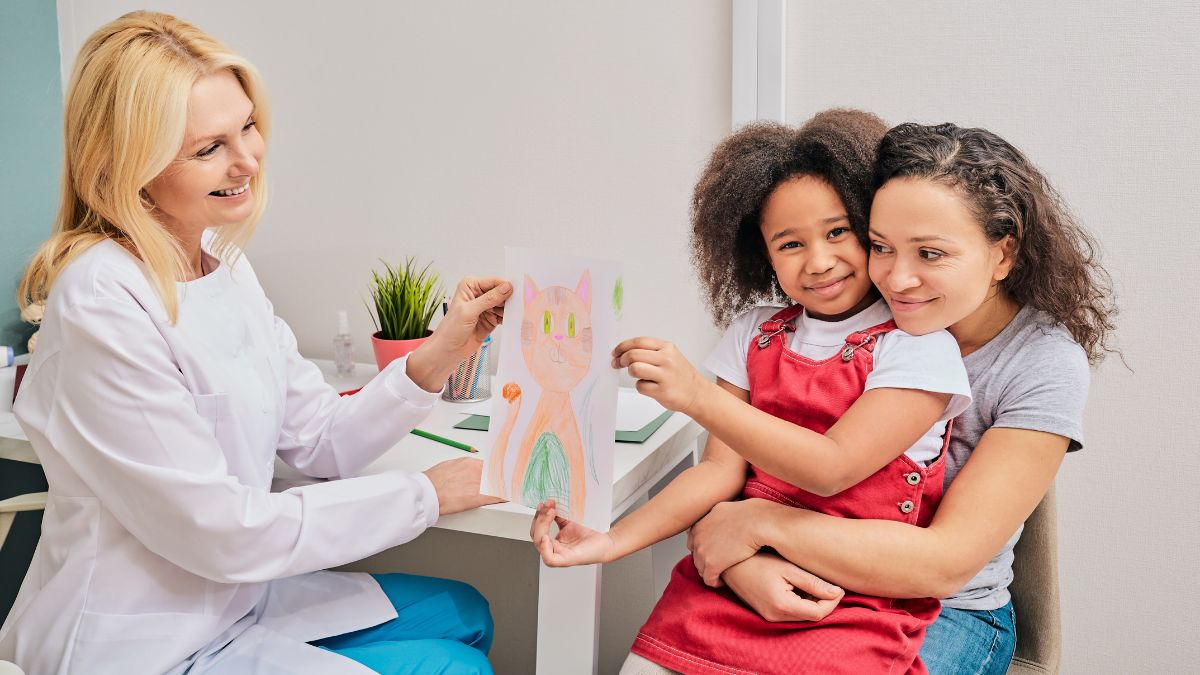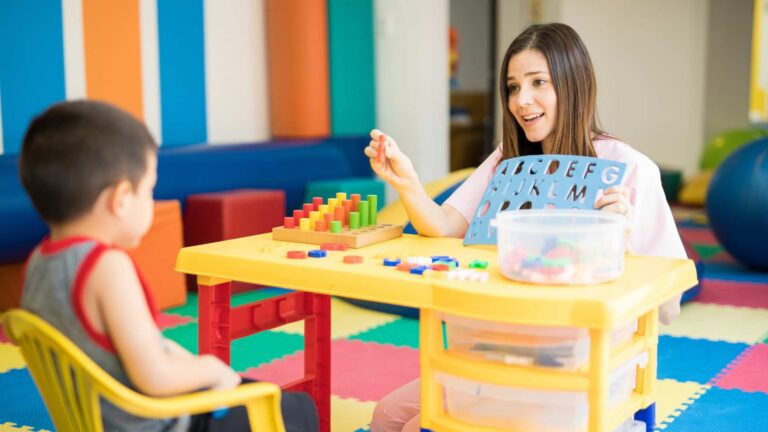How does art therapy benefit children with autism?
Art therapy, when combined with ABA therapy, emerges as a highly effective means of supporting and treating individuals with autism. This unique approach taps into traditional methods, providing an avenue for expression, emotional release, and self-discovery.
But how does art therapy benefit children with autism? This blog post from Texas ABA Centers explores not only the transformative potential of art therapy but also offers engaging activities you can enjoy with your child.
Understanding Art Therapy
Before exploring the profound connection between art and autism, let’s consider the essence of art therapy. As defined by the American Art Therapy Association, it is a mental health profession that enhances the well-being of individuals, families, and communities through active engagement in artistic expression. Facilitated by art therapists, this therapy addresses personal and relational goals, utilizing the creative process within a therapeutic relationship.
Art therapy enhances cognitive and sensory-motor functions. It also boosts self-awareness and self-esteem, improves social skills, nurtures emotional resilience, contributes to societal and ecological transformations, and much more. Such as? Consider:
10 Significant Benefits of Art Therapy in Regard to Autism
(As observed during care at Texas ABA Centers and supported in a study by The American Journal of Occupational Therapy.)
- Communication and Expression – For individuals with autism facing challenges in verbal communication, art therapy provides a valuable alternative. Activities like drawing, painting, or sculpture enable them to express thoughts, emotions, and experiences nonverbally.
- Sensory Processing – Art therapy aids individuals in exploring and regulating sensory experiences, which is crucial for those with sensory sensitivities. Engaging with diverse art materials helps manage sensory issues and develop a deeper understanding of preferences.
- Social Interaction – Art therapy is conducted in a group setting and fosters social interaction and communication skills in a structured environment. Collaborative projects and activities enhance the ability to engage with peers effectively.
- Emotional Regulation – Art therapy becomes a conduit for exploring emotions, managing anxiety, and enhancing emotional regulation, providing a holistic approach to emotional well-being.
- Self-esteem Boosting – Completing an art project instills a profound sense of satisfaction and achievement, elevating self-esteem. The creative process enhances skills, fostering a better understanding of preferences and interests.
- Creativity and Problem-Solving – Engaging in the artistic process nurtures creativity and problem-solving skills. It encourages thinking outside the box and finding innovative solutions to challenges.
- Stress Reduction – Creative activities offer relaxation and stress reduction, contributing to an overall sense of well-being for individuals with autism.
- Visual Supports – Art therapy can create visual aids like schedules or social stories, aiding individuals in understanding and navigating daily routines and social situations.
- Fine Motor Skills Development – Many art activities require fine motor skills, benefiting individuals with autism struggling with motor coordination. Practicing these skills through art improves dexterity and hand-eye coordination.
- Nervous System Enhancement – Art therapy recognizes the importance of multi-sensory experiences. It plays a vital role in refining communication abilities and sensory awareness in the emotional and behavioral development of children with autism.
Parent-Child Connection Bond
Art therapy becomes a powerful tool for parents to build strong bonds with their children. Collaborating on art projects provides insight into a child’s unique perspective, fostering mutual appreciation and understanding.
Art Therapy Activities to Practice at Home
As a parent or caregiver, engaging in creative art activities at home can enhance cognitive, sensorimotor, and other skills in your child. While trained clinicians administer art therapy, exploring creativity at home can be enjoyable. Consider these activities:
- Drawing and Coloring: Encourage self-expression, fine motor skill development, and relaxation.
- Collage Making: Explore textures, shapes, and colors to enhance creative thinking.
- Sculpting: Use clay or playdough for tactile exploration and three-dimensional engagement.
- Painting: Express emotions and creativity through vibrant artwork.
- Sensory Bottles: Provide visual stimulation and satisfy sensory needs with fun, engaging crafts.
Texas ABA Centers and Art Therapy in Autism
In conclusion, art therapy offers a creative and non-verbal means for individuals with autism to communicate, express emotions, and develop essential skills. When integrated with ABA therapy, it becomes a powerful combination addressing the unique needs of individuals with autism.
Texas ABA Centers is committed to supporting children on the autism spectrum, incorporating their interests and needs into therapy sessions. If your child is interested in art, our dedicated team is ready to discuss its inclusion in therapy. Art therapy is not just an activity; it’s a bridge to understanding and healing.
For personalized care and information, contact us at (877) 771-5725 or schedule a free consultation. Let’s collaborate to nurture your child’s passions and aspirations, fostering a positive and empowering atmosphere.








